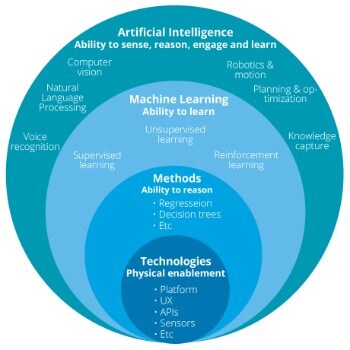
Photo by Markus Winkler on Unsplash
Understanding the Basics of Artificial Intelligence
Introduction to AI
Table of contents
- Defining Artificial Intelligence: What is AI and How Does It Work?
- Applications of AI in Industry: How AI is Revolutionizing Healthcare, Finance, Manufacturing, and More
- A Brief History of AI: From Early Research to Modern Innovations
- The Evolution of AI: Advancements in Computer Hardware, Software, and Data Availability
Defining Artificial Intelligence: What is AI and How Does It Work?

Artificial Intelligence (AI) is the simulation of human intelligence processes by computer systems. AI is based on the idea that machines can be designed to think and learn in a similar way to humans. AI systems are designed to learn from data, recognize patterns, and make decisions based on that data.
There are two main types of AI: narrow or weak AI and general or strong AI. Narrow AI is designed to perform a specific task, such as facial recognition or language translation, while general AI is capable of performing any intellectual task that a human can do.
AI systems work by collecting and analyzing large amounts of data to identify patterns and make predictions. Machine learning, a subset of AI, allows machines to learn from data and improve their performance over time.
Applications of AI in Industry: How AI is Revolutionizing Healthcare, Finance, Manufacturing, and More

AI has numerous applications in various industries. In healthcare, AI is used for medical imaging analysis, drug discovery, and patient monitoring. AI-powered chatbots and virtual assistants are also used to improve patient care.
In finance, AI is used for fraud detection, algorithmic trading, and customer service. Chatbots and virtual assistants are also used to provide personalized financial advice to customers.
In manufacturing, AI is used for predictive maintenance, quality control, and supply chain optimization. AI-powered robots are also used to perform repetitive and dangerous tasks, freeing up humans for more complex and creative work.
Other industries that are using AI include retail, transportation, and entertainment. AI is being used to improve customer experience, optimize operations, and increase efficiency.
A Brief History of AI: From Early Research to Modern Innovations

AI has been a topic of interest since the 1950s, with researchers such as John McCarthy, Marvin Minsky, and Claude Shannon paving the way for its development. The early years of AI were characterized by optimism and enthusiasm, with researchers believing that AI would soon be able to solve all kinds of problems.
However, progress was slow, and AI became the subject of scepticism and criticism in the 1970s and 1980s. This period, known as the "AI winter," saw a decline in funding and interest in AI research.
The 1990s saw a resurgence of interest in AI, with the development of machine learning algorithms and neural networks. This led to breakthroughs in areas such as speech recognition, image recognition, and natural language processing.
Today, AI is used in a wide range of applications, from self-driving cars to virtual assistants to healthcare diagnostics.
The Evolution of AI: Advancements in Computer Hardware, Software, and Data Availability

The evolution of AI has been shaped by advancements in computer hardware, software, and data availability. In the early years of AI research, computer hardware was limited in its processing power and memory capacity, making it difficult to develop AI systems.
The development of more powerful computers and the advent of cloud computing have made it possible to process and analyze large amounts of data, which is essential for training AI systems.
Advancements in software, particularly in machine learning algorithms and neural networks, have also contributed to the development of AI. These algorithms allow machines to learn from data and improve their performance over time.
The availability of data is also a key factor in the evolution of AI. The proliferation of connected devices and the internet has led to a massive increase in the amount of data available for analysis. This data is used to train AI systems and improve their accuracy and performance.
Overall, the evolution of AI has been driven by a combination of hardware, software, and data advancements, leading to the development of increasingly sophisticated AI systems.
Thank you for taking the time to read this blog on the basics of artificial intelligence. I hope this has provided you with valuable insights into what AI is, its applications in different industries, and its history and evolution. This is the first blog in a series on artificial intelligence, and I look forward to sharing more in-depth knowledge on this fascinating topic with you. Thank you again for reading, and stay tuned for the next instalment.

